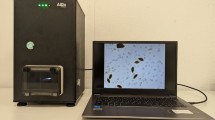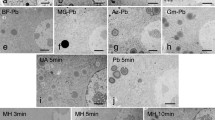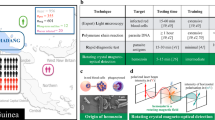Abstract
ACCORDING to Baker1, the nucleus of the malaria parasite was seen for the first time in 1891. This was made possible by Romanowsky's invention of eosinate of methylene blue. Later other workers brought out modifications of this compound dye. They came to be known collectively as Romanowsky stains. All of them were prepared from eosin and methylene blue. Two or three of them were definite compounds formed by the interaction of methylene blue, a basic dye with eosin (tetrabromofluorescein disodium salt), an acid dye. Others (for example, Leishman stain) were prepared by the interaction of a polychrome methylene blue (prepared under controlled conditions) with eosin. The polychrome methylene blue is a hybrid mixture of azurs A, B, C, with methylene violet (Bernthsen) base and chloride with lower oxides of methylene blue. The latter make up the bulk of the polychrome methylene blue while the azurs and methylene violet are present only in minute quantities.
This is a preview of subscription content, access via your institution
Access options
Subscribe to this journal
Receive 51 print issues and online access
$199.00 per year
only $3.90 per issue
Buy this article
- Purchase on Springer Link
- Instant access to full article PDF
Prices may be subject to local taxes which are calculated during checkout
Similar content being viewed by others
References
Baker, J. R., Principles of Biological Microtechnique, (Methuen, London, 1958).
Gurr, E., Nature, 202, 920 (1964).
Gurr, E., Rational Use of Dyes in Biology, (Leonard Hill, London) (in the press).
Author information
Authors and Affiliations
Rights and permissions
About this article
Cite this article
GURR, E. Role of Eosin in Romanowsky Staining of Malaria Nucleus. Nature 202, 1022–1023 (1964). https://doi.org/10.1038/2021022a0
Issue Date:
DOI: https://doi.org/10.1038/2021022a0
Comments
By submitting a comment you agree to abide by our Terms and Community Guidelines. If you find something abusive or that does not comply with our terms or guidelines please flag it as inappropriate.



